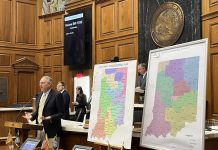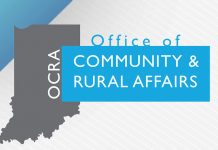Petitioners requesting EPA to list 1-BP, also known as n-propyl bromide (nPB), have demonstrated its adverse health and environmental impacts. This chemical is used in a range of products and processes, including dry cleaning, electronics, and metal cleaning, pharmaceutical and agricultural products, and spray adhesive applications.
“With this action, EPA is granting, for the first time, a request through the use of petition to add a chemical substance to the hazardous air pollutant list under the Clean Air Act,â€Â said EPA Administrator Andrew Wheeler. “Nearly a decade after the petition was received by the former administration, the Trump Administration is taking action to protect human health and the environment.â€
Under the CAA, EPA is required to regulate emissions of air toxics, also known as hazardous air pollutants. The original CAA list of regulated air toxics included 189 pollutants. Since 1990, EPA has modified the list through rulemaking so that it now includes 187 pollutants.
In this action, EPA has granted petitions that were submitted in 2010 and 2011 from the Halogenated Solvents Industry Alliance and New York State Department of Environmental Conservation asking the agency to add 1-BP to the list of hazardous air pollutants in the CAA. After reviewing the evidence provided by the petitioners, EPA determined that “emissions, ambient concentrations, bioaccumulation or deposition†of 1-BP may harm human health, including causing cancer as well as reproductive and neurological problems.
Granting these petitions is the first step in a series of actions to address air emissions of 1-BP. In a subsequent action, EPA will modify the Code of Federal Regulations to add 1-BP to the CAA list of hazardous air pollutants. After 1-BP is added to the list of hazardous air pollutants, EPA may consider revising or creating new emissions standards for source categories that emit 1-BP.
EPA’s action to add 1-BP to the Hazardous Air Pollutants list is the latest Trump Administration effort to address backlogged actions that the agency inherited from the prior administration.
The Trump EPA inherited 383 backlogged State Implementation Plans (SIPs), and as of June 8, 2020, it has reduced that number to 327. A SIP classified as “backlogged†means that EPA action is past due pursuant to CAA deadlines for action. Due to EPA Lean Management System efforts, EPA projects the SIP backlog next year may approach 200, which is less than 1/3 of what it was a few years ago. Reducing the SIP backlog nationally is a priority for the Trump Administration. The agency works closely with state and local air agencies to prioritize action on SIPs that matter most for air quality and public health.




